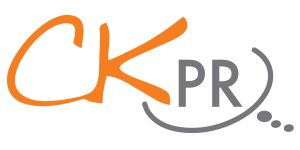Social media channels – is quantity or quality more important?

How to best engage with your social media audiences
Danielle, an owner of a Melbourne-based ‘bricks & mortar’ retail store, has asked us about quantity versus quality when it comes to Facebook and Instagram follower numbers.
“I know people that brag about having tens of thousands of followers, but we aim for ‘quality’. I’d rather a lower number that actually support us,” says Danielle.
The conversation around engagement and follower numbers is one we consistently see debated in our industry. We’ll delve deeper into this topic in conjunction with our friends at digital agency OnQ Marketing.
How do Facebook and Instagram prioritise posts and stories?
Long gone are the days when Facebook and Instagram used to simply display posts in chronological order. As they’re owned by the same organisation, they are as equally elusive about how their algorithms work in terms of prioritising posts and stories.
Instagram does, however, disclose the following priorities for an individual’s post feed:
- likelihood the audience will be interested in the content (including the use of image recognition software)
- date the post was shared (so it’s important to post when your audience is most active, which you can ascertain via the insights tab if you have a business profile)
- previous interactions with the person posting (this works for both sides of the equation – how much you’ve commented on each other’s posts, direct messaged each other etc.)
Quentin Aisbett, Founder of OnQ Marketing, says the size of your following is a “vanity metric” rather than directly related to your business objectives.
“Unfortunately, so many businesses launch social media pages with the wrong objectives; looking to build the largest following is one result of this.
“The social networks have a clear goal of keeping users engaged in their app as often and as long as they can, therefore they do everything they can to keep users scrolling, clicking, liking, and sharing.”
According to Quentin, a recent experiment by Agorapulse – a social media management tool – indicated Instagram may penalise posts that ask users to click a bio link.
“So if you want traffic, you’ll have to pay, because of course Instagram allows you to provide a link when you advertise.”
What does that mean for your activity?
As well as posting at optimum times, you also need to be mindful that every one of your posts is going to need as much engagement as possible. In other words, only post something you think will be interesting to a good portion of your followers. This includes a high-quality image or video.
“Maintain mechanisms in your posts that encourage engagement with little obstacles,” says Quentin. “For example, ask questions of your users but make it simple to generate more engagement.”
Perhaps you could share a personal story about how you overcame adversity and ask what challenges people have recently faced. Something relatable or inspiring is always a winner.
If you continue to post low performing content, your posts will drop lower and lower in your followers’ feeds, creating a vicious cycle as your future posts will be viewed by a smaller audience.
Therefore, it’s essential to have genuine followers; buying followers from third parties may seem like a good idea to boost your numbers and to look popular/successful, however all you’ll succeed in doing is lowering your engagement. Let’s use some maths to demonstrate this:
- you have 2,000 followers and 250 like your post – 12.5% engagement (based on likes only)
- you have 100,000 followers (of which 98,000 are bought) and 1,000 like your post – only 1% of your audience is engaged (based on likes only)
Quentin provides these further tips for optimising your social media posts:
- Aim for early engagement – the sooner accounts engage with your post, the better. You can do this by boosting the post early to a segment of users that are more likely to engage. The early engagement indicators will increase your visibility.
- Engage with other users. If you do this consistently with their posts, they should reciprocate and consequently see more of your content organically.
- The social networks crawl the comments in your posts to understand the nature of the content and determine relevancy with other users. Identify how you can capitalise on this.
Videos for social media
Although Instagram and Facebook don’t necessarily prioritise videos as part of their algorithms, the trend is that more and more people are preferring video. So if a user regularly views videos, their social media channels will rank them higher (because of the likelihood of being interested in that content, which we mentioned earlier).
Continue the conversation and attract more interest
Reply to as many comments as feasible in your posts, as well as to your direct messages (the latter can be generated through stories as well). Similarly, comment and engage with the accounts you follow that may have synergies with your business. For example, Danielle may like to engage with her suppliers, media outlets that fit her audience, and businesses within the shopping precinct where her store is located.
Use genuine locations (geo-tagging) and genuine hashtags to extend your reach to those who have already shown an interest in your subject matter.
Facebook Messenger
Quentin says if you’re using Facebook, you should strongly consider building a database of Facebook Messenger subscribers.
“Whereas organic reach on Facebook is typically anywhere between 1%-5%, you can expect open rates of more than 80% on your Facebook Messenger campaigns. And for now, you can play for free!”
However, businesses should be conscious that advertising messages delivered via Messenger may be received negatively or even aggressively by users who view this as an intrusion.
Notifications of your posts and stories
One other valuable tip, especially regarding Facebook which is becoming increasingly advertising heavy, is to encourage your followers to turn on notifications for your posts or stories. That way you’re not just relying on the algorithm for your audience to see your content.
Unfortunately, those with Facebook pages are increasingly relying on advertising spend to be seen, unless they have tremendous engagement. Therefore, another effective Facebook tactic can be to start a group in addition to your page. The group content is far more likely to be prioritised and seen by members – but you do need to carefully think about the group’s purpose and what the point of interest will be for your audience.
Influencers and engagement for PR campaigns
At CK PR, when looking at potential influencers to involve in a campaign, we consider engagement levels in detail. Follower numbers are also considered but more so from the perspective of ‘how many people can we realistically engage through this influencer?’. Shares and tailored comments are seen as most valuable, followed by ‘likes’.
For example:
- An Instagram influencer that fits our target audience has 700,000 followers, but averages 60 comments per post, 10 shares and 5,500 likes.*
- Another Instagram influencer that fits our target audience has 55,000 followers but averages 125 comments, 12 shares and around 3,000 likes.*
Dependent on budget and some other factors, we’ll be selecting the second influencer as they are demonstrating a loyal and highly engaged audience; a partnership with them will have more cut through and provide a higher return on investment.
*The above examples are based on two real-life personalities on Instagram.
What are your thoughts on follower numbers versus engagement and what has worked for you? See below to submit a comment.
Have you enjoyed this article immensely? Subscribe to our news for more of these insights.
